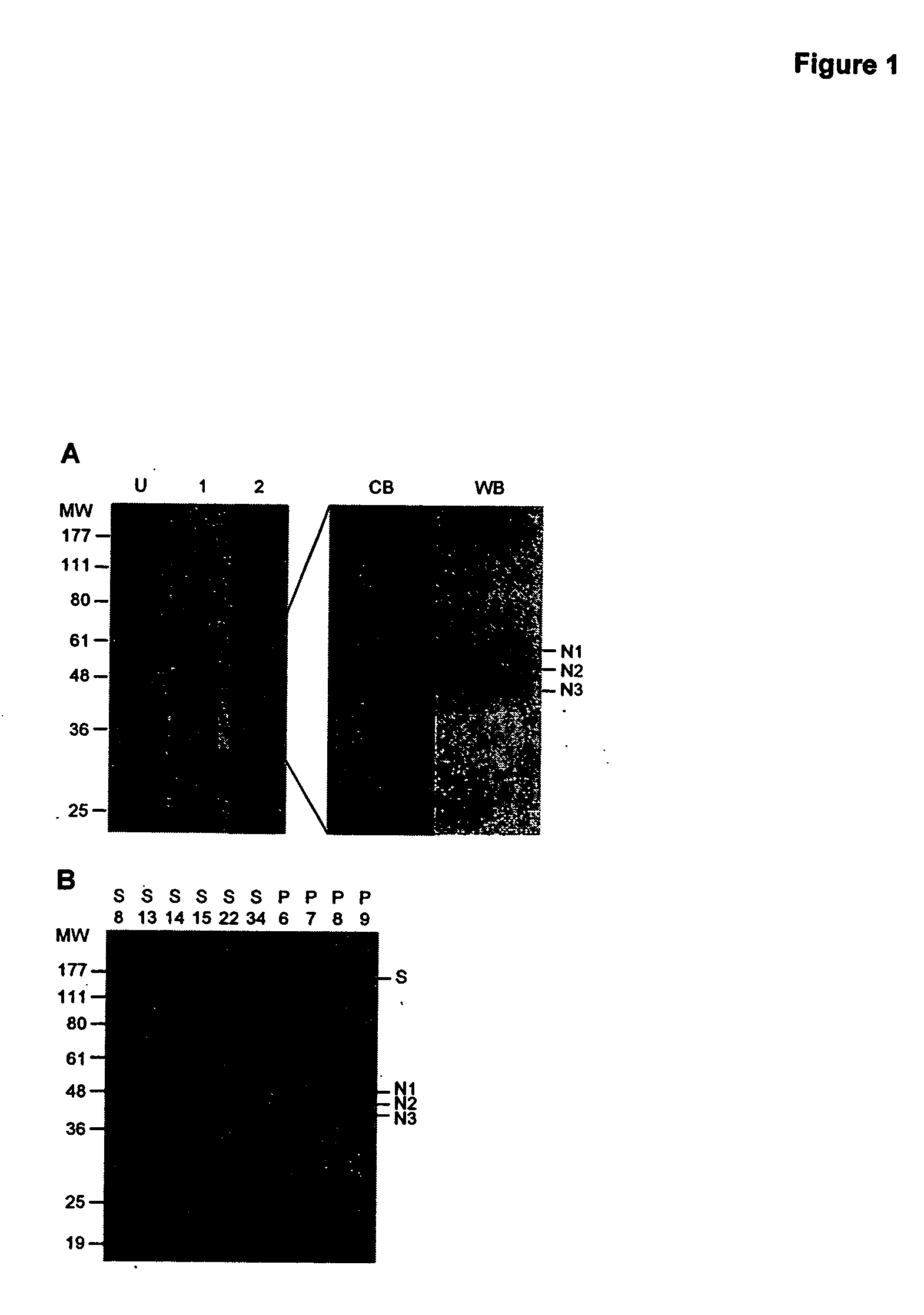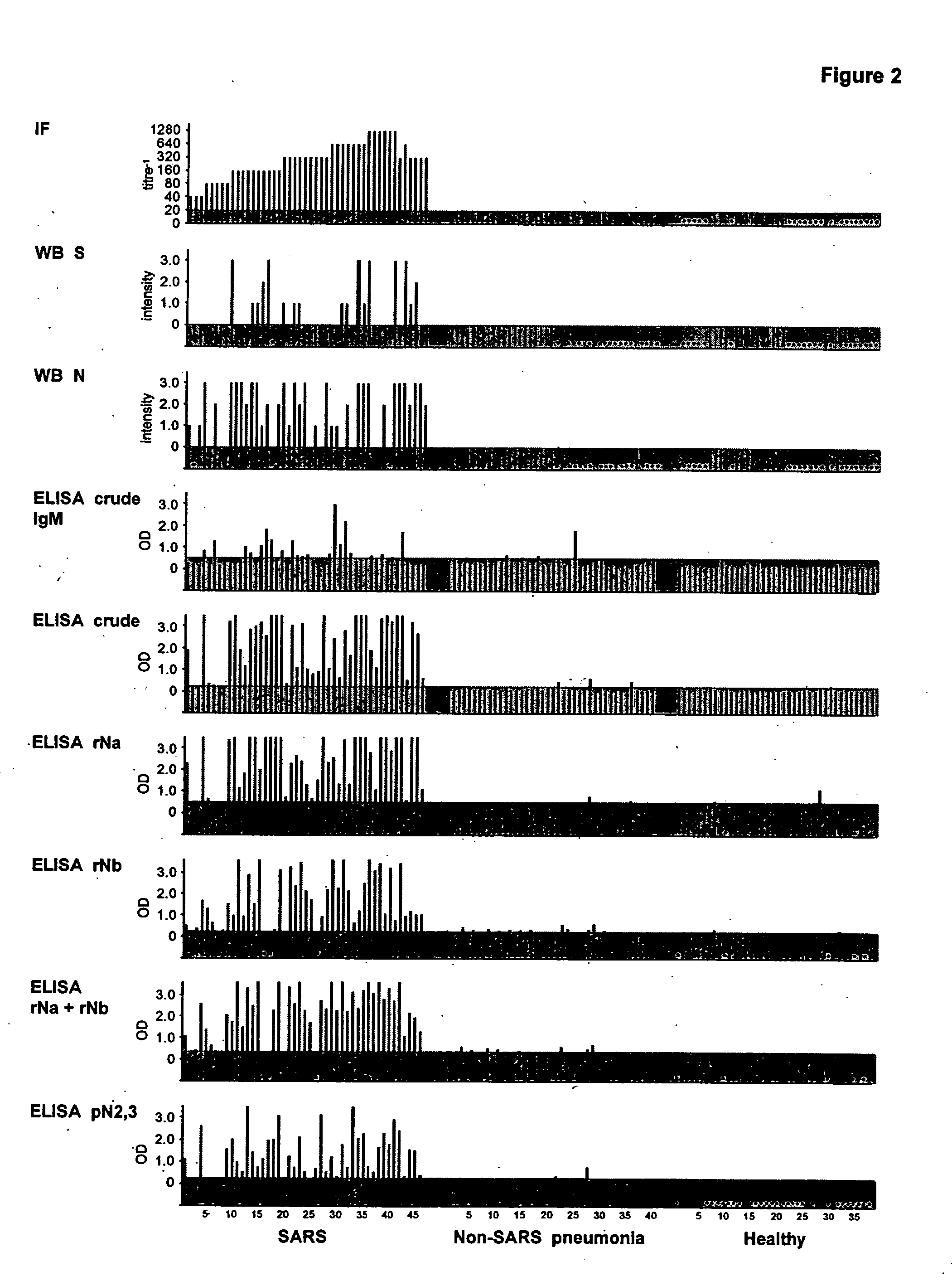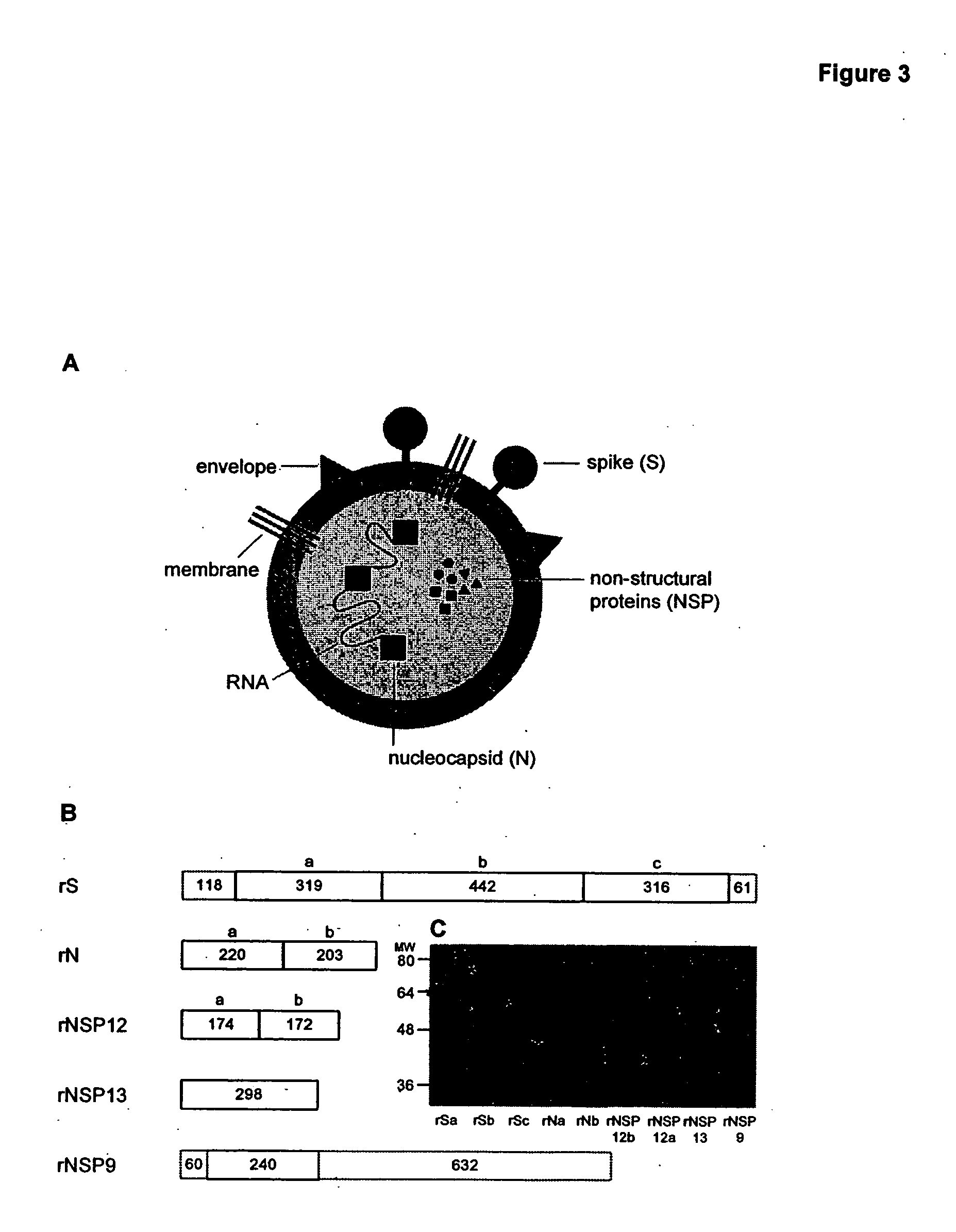Compositions and methods for diagnosing and preventing severe acute respiratory syndrome (SARS)
a respiratory syndrome and composition technology, applied in the field of immunology and molecular biology, can solve the problems of difficult breathing, low diagnostic accuracy, and high fever of patients, and achieve the effect of easing their us
- Summary
- Abstract
- Description
- Claims
- Application Information
AI Technical Summary
Benefits of technology
Problems solved by technology
Method used
Image
Examples
example 1
Identification of Nucleocapsid as an Important Diagnostic Antigen by Western Blot (WB) Analysis
[0234] The antibody response of SARS patients to SARS CoV challenge was analyzed to determine which antigens of the SARS virus were targeted by the patient's immune responses. A crude mixture of the viral antigens was extracted from culture cells grown with the virus and separated on a 10% polyacrylamide gel. FIG. 1A shows the gel profile of the extracted proteins after gel electrophoresis. The proteins of gel were transferred to a polyvinylidene difluoride membrane and incubated with the patient's serum, and patient's antibodies bound to transferred proteins detected using enzyme-conjugated antibodies directed against the patients antibodies and detected using a fluorometric reagent recognized by the conjugated enzyme. The method is described in the preceding paragraph (Section 4a).
[0235] As depicted in FIG. 1B, the most reactive antigens found with SARS patients but absent in non-SARS ...
example 2
ELISA Studies Using Recombinant Viral Antigens to Verify the Importance of the Nucleocapsid Protein
[0236] To test that the nucleocapsid is the major SARS viral antigen recognized by a SARS-challenged immune system, recombinant antigens of the SARS nucleocapsid (the N-terminal half and the C-terminal half), spike protein (3 subunits), and non-structural proteins (NSP12 [2 subunits], NSP9 [an internal segment], NSPl3 [whole]) were produced in Escherichia coli. FIG. 3A illustrates the relationship of these molecules in the SARS viral particle. FIG. 3B illustrates the recombinantly-produced domains of each protein. FIG. 3C is a Coomassie Blue-stained gel providing a rough indication of the molecular weights of each recombinantly-expressed protein.
[0237] The recombinant antigens were subjected to ELISA analysis using patient sera, as described above. In this analysis, the recombinant N-terminal nucleocapsid antigen (rNa) was found to react with the same patient sera as the crude viral ...
example 3
Competition Analysis Using the Recombinant Protein of SEQ ID NO:2
[0243] To confirm that the N1 antigen identified in the crude viral extract presented in FIG. 1 is the nucleocapsid protein, the recombinant protein rNa (SEQ ID NO:2) was used as inhibitor in Western blot analysis. As depicted in FIG. 5A, using sera from 2 patients (S35 and S44) and each serum containing admixed rNa, rNa significantly blocked antibody interaction not only with N1, but also with the N2 and N3 antigens. A fourth antigen, N4, was also inhibited. Inhibition was greatest with N3 and N4, followed by N2, and then, N1. In contrast, when the spike antigen, rSb, was admixed with the sera, the N1-N4 activities were not affected; rather the reactivity at the 150 kD region (“S”) was completely abolished (FIG. 5A). This shows that N1-N4 are all nucleocapsid antigens, and suggests that N2, N3 and N4 are fragments of N1 in which increasing lengths of the C-terminus are lost, progressing from N2 to N4. FIG. 5A is a We...
PUM
| Property | Measurement | Unit |
|---|---|---|
| Fraction | aaaaa | aaaaa |
| Immunostimulation | aaaaa | aaaaa |
| Surface | aaaaa | aaaaa |
Abstract
Description
Claims
Application Information
 Login to View More
Login to View More - R&D
- Intellectual Property
- Life Sciences
- Materials
- Tech Scout
- Unparalleled Data Quality
- Higher Quality Content
- 60% Fewer Hallucinations
Browse by: Latest US Patents, China's latest patents, Technical Efficacy Thesaurus, Application Domain, Technology Topic, Popular Technical Reports.
© 2025 PatSnap. All rights reserved.Legal|Privacy policy|Modern Slavery Act Transparency Statement|Sitemap|About US| Contact US: help@patsnap.com



